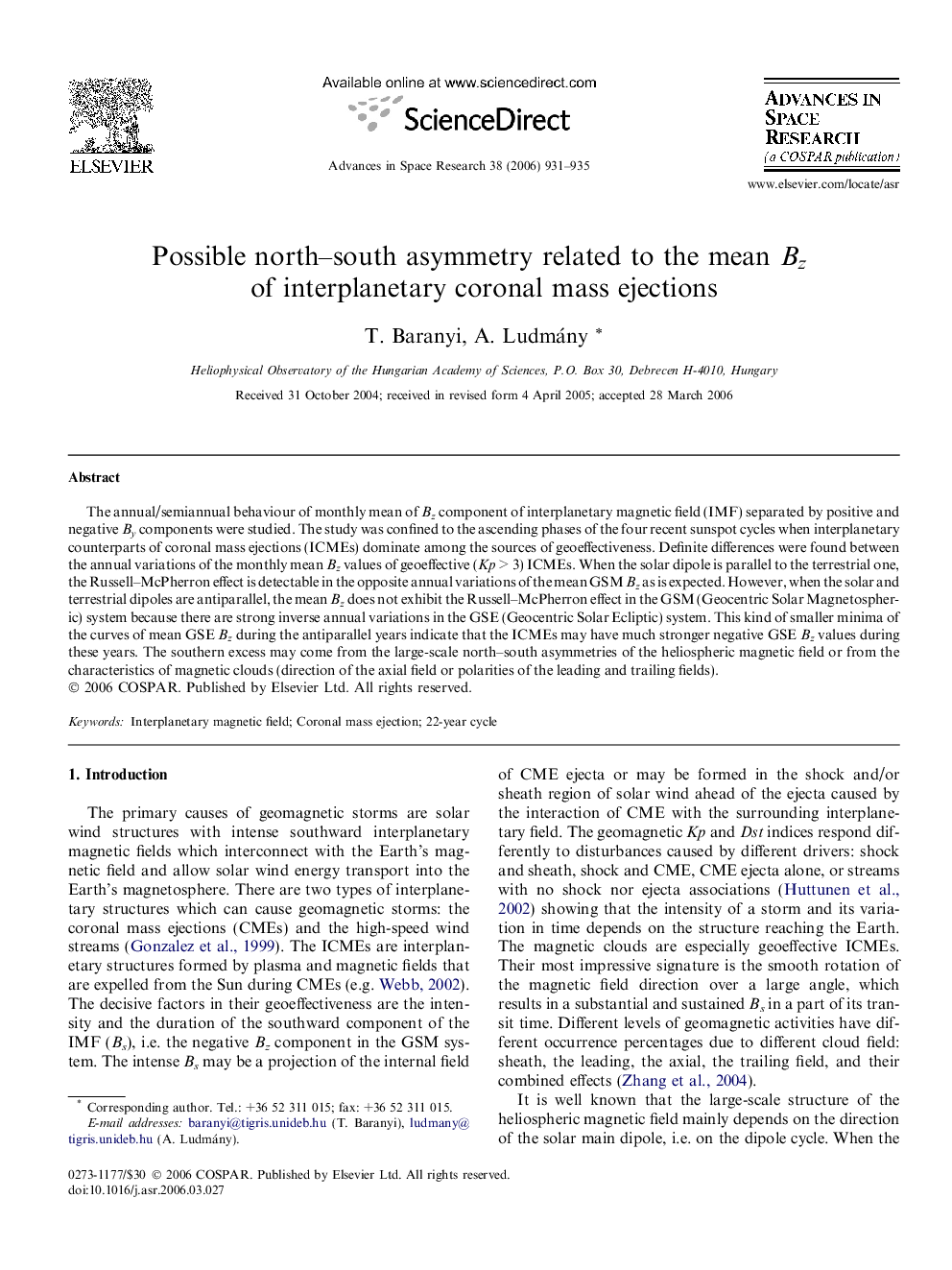| Article ID | Journal | Published Year | Pages | File Type |
|---|---|---|---|---|
| 1769085 | Advances in Space Research | 2006 | 5 Pages |
Abstract
The annual/semiannual behaviour of monthly mean of Bz component of interplanetary magnetic field (IMF) separated by positive and negative By components were studied. The study was confined to the ascending phases of the four recent sunspot cycles when interplanetary counterparts of coronal mass ejections (ICMEs) dominate among the sources of geoeffectiveness. Definite differences were found between the annual variations of the monthly mean Bz values of geoeffective (Kp > 3) ICMEs. When the solar dipole is parallel to the terrestrial one, the Russell-McPherron effect is detectable in the opposite annual variations of the mean GSM Bz as is expected. However, when the solar and terrestrial dipoles are antiparallel, the mean Bz does not exhibit the Russell-McPherron effect in the GSM (Geocentric Solar Magnetospheric) system because there are strong inverse annual variations in the GSE (Geocentric Solar Ecliptic) system. This kind of smaller minima of the curves of mean GSE Bz during the antiparallel years indicate that the ICMEs may have much stronger negative GSE Bz values during these years. The southern excess may come from the large-scale north-south asymmetries of the heliospheric magnetic field or from the characteristics of magnetic clouds (direction of the axial field or polarities of the leading and trailing fields).
Related Topics
Physical Sciences and Engineering
Earth and Planetary Sciences
Space and Planetary Science
Authors
T. Baranyi, A. Ludmány,
